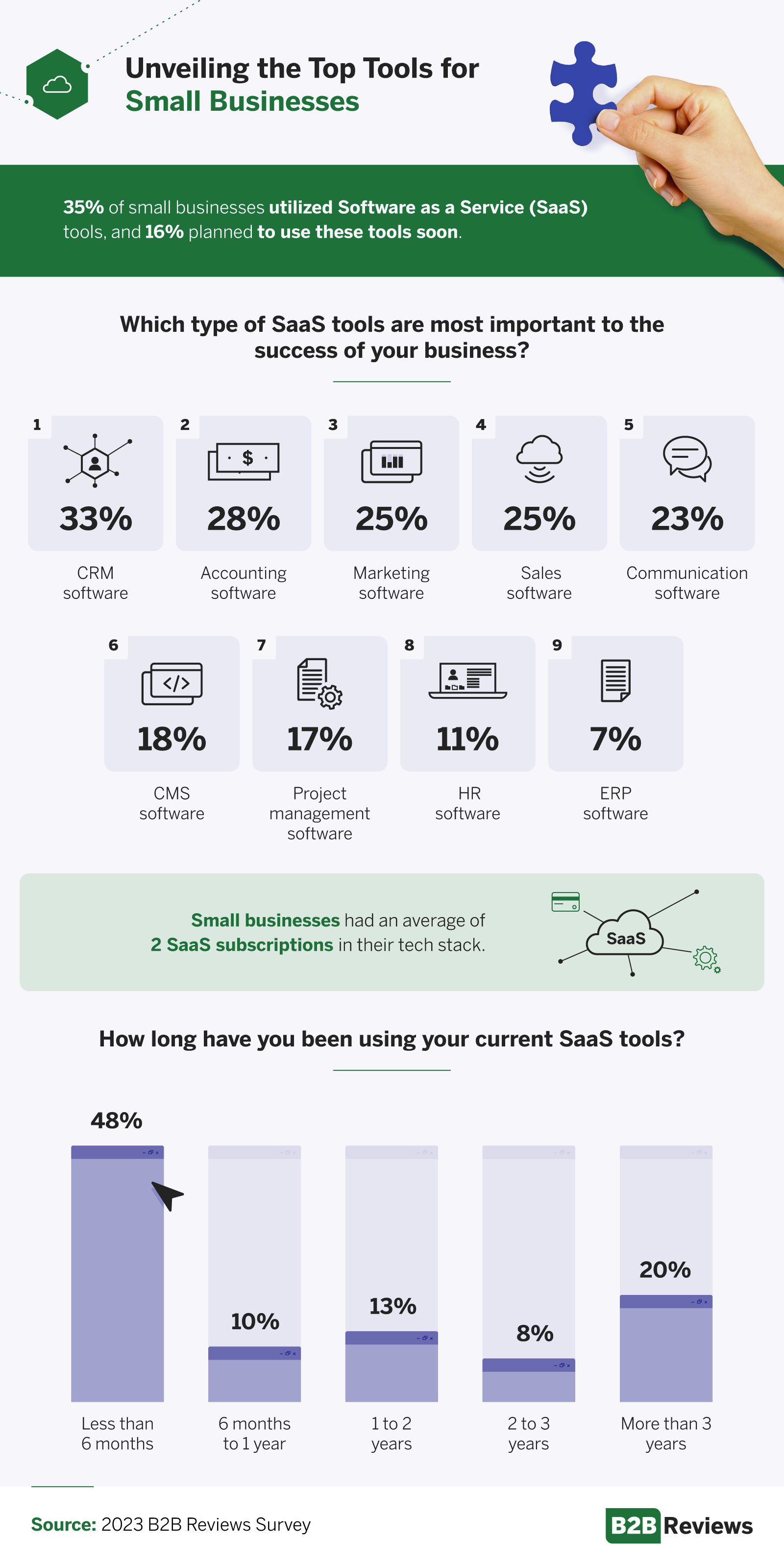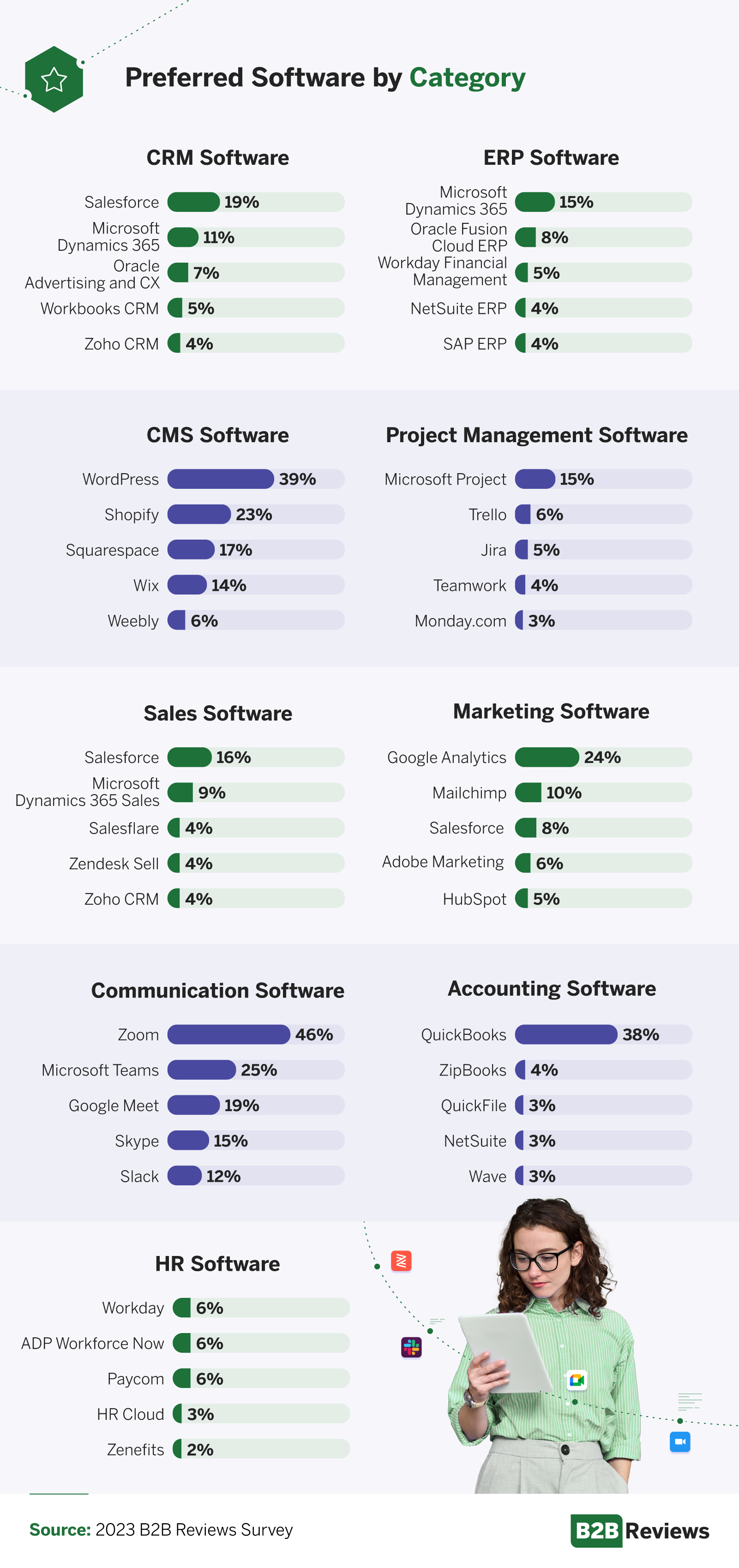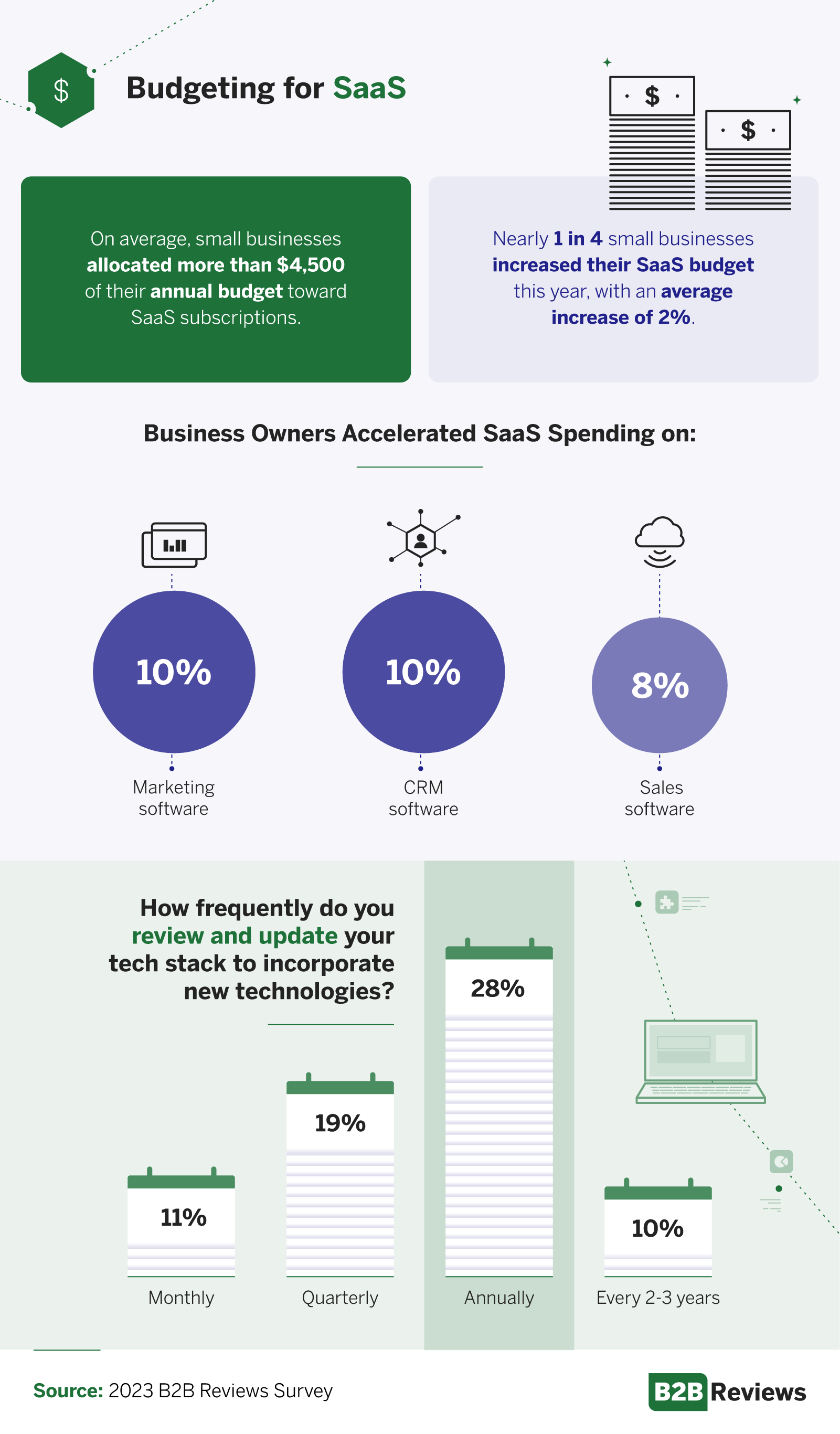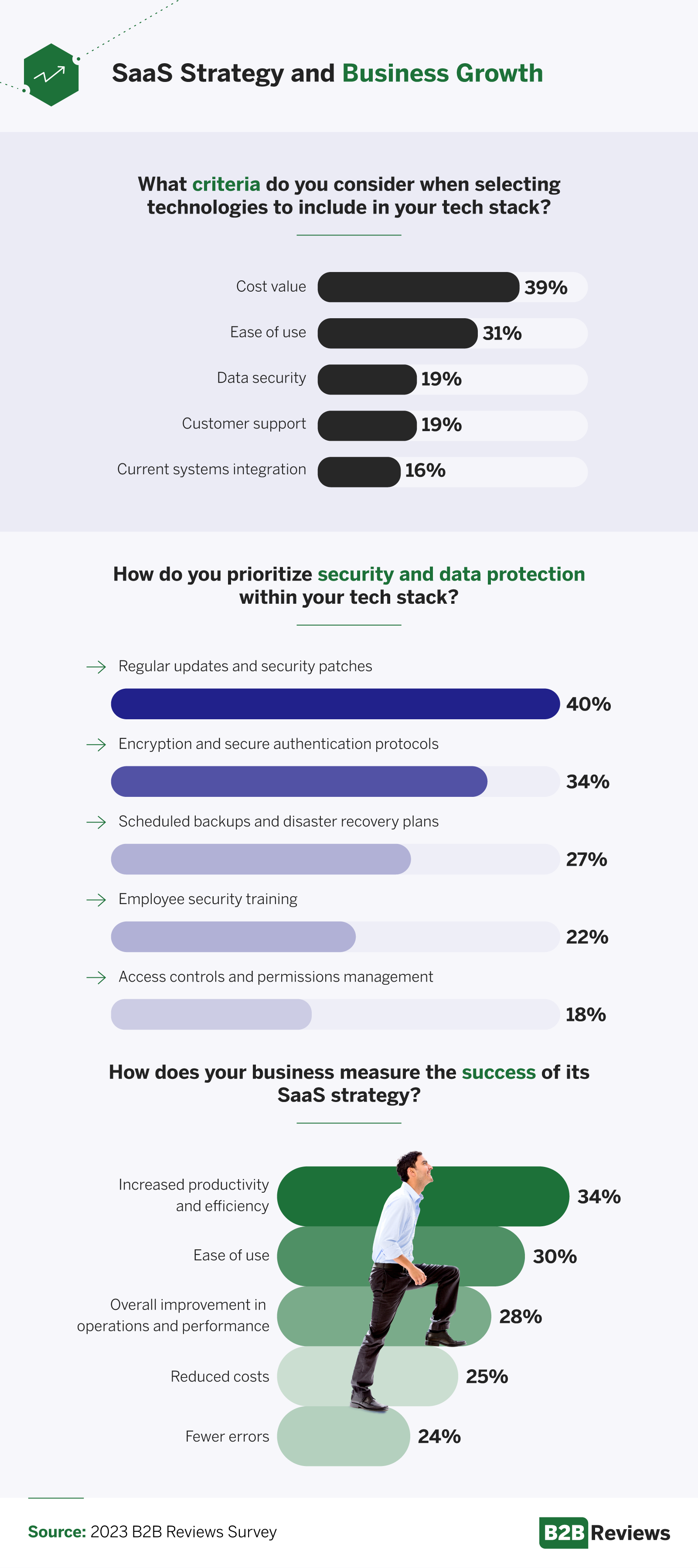We may earn money when you click on links to our partners. Advertiser Disclosure

Navigating the Small Business Subscriptions Frontier
Key Takeaways
- 35% of small businesses utilize Software as a Service (SaaS) tools, and 16% plan to use these tools soon.
- 1 in 3 small businesses says customer relationship management software is most important to the success of their business.
- The most popular SaaS tools used by small businesses are: Zoom (46%), WordPress (39%), QuickBooks (38%), Microsoft Teams (25%), and Google Analytics (24%).
- 23% of small businesses increased their SaaS budget this year.
- Nearly 1 in 5 small business owners review and update their tech stacks quarterly to incorporate new technologies.
The Service of Software
Software as a Service (SaaS) subscriptions have recently become the go-to model for many technologies and business services. All you need to access SaaS tools are an internet connection, a web browser, and a subscription, making them a convenient choice. How do business owners feel about SaaS in 2023? How many subscriptions do they have in their tech stack, and what does their SaaS budget look like? We surveyed 555 business owners to learn how they utilize SaaS tools to optimize their businesses.
SaaS and Business
SaaS products span industries and applications—everything from payroll software to sales to communication. Let’s discover which products are the most important to small businesses.

Of the small business owners we surveyed, 35% said they currently used SaaS tools—while 16% said they plan on using it soon. Small-business owners had an average of two SaaS subscriptions in their tech stack, with 1 in 3 highlighting customer relationship management (CRM) software as the most important for their business. Interestingly, 48% had only used their current SaaS tools for less than six months, indicating the recent growth of this software trend.
Next, we’ll break down SaaS software by category to see which are the most common among small businesses.

Across all categories, the most popular SaaS tools used by small businesses included:
- Zoom (46%)
- WordPress (39%)
- QuickBooks (38%)
- Microsoft Teams (25%)
- Google Analytics (24%)
In the post-COVID remote work landscape, services like Zoom have retained popularity, suggesting a continued interest in the SaaS model.
What’s in the Budget
SaaS tools range in price depending on various factors, and many subscription costs increase annually. We asked small business owners about their SaaS budgets and how often they review their subscriptions for renewal or cancellation.

Most small-business owners we surveyed allocated more than $4,500 annually for SaaS subscriptions. In addition, 23% reported a budget increase this year, with the largest increases going toward marketing, CRM, and sales software. Business owners were most likely to have recently acquired software in the following SaaS categories:
- Sales
- Marketing
- CRM
- Communication
- Accounting
For some, this spending paid off: More than 3 in 5 small-business owners said the SaaS tools they used led to a positive return on investment. As a result of such success, more than 4 in 5 small businesses said they had not canceled any of their SaaS subscriptions this year.
To monitor the ROI of their SaaS investments and incorporate emerging technologies, 28% of businesses reviewed their tech stacks annually, 19% reviewed and updated them quarterly, and 11% conducted monthly reviews.
Prioritizing SaaS
In the rapidly innovating tech landscape, it’s important for businesses to have a SaaS strategy. We asked respondents about criteria for choosing new technology, data protection strategies, and how they measure success.

The most important criteria for choosing new SaaS tools was cost value (39%), demonstrating the imperative need for businesses to maximize ROI at every level. Ease of use (31%) was the next most critical factor, followed by data security (19%). To maintain data security, businesses prioritized updates and security patches (40%) and used encryption and secure authentication protocols (24%).
Cost, ease of use, and security were also among the top challenges when incorporating new SaaS tools. The biggest challenges were as follows:
- High costs of subscription fees (40%)
- Lack of expertise in new software tools (18%)
- Difficulty with software integration (17%)
- Concerns about data security and privacy (16%)
- Limited customization options (15%)
To offset some of these challenges, nearly 1 in 3 small business owners used demos and free trial periods to test SaaS tools before committing to paid subscriptions.
Small business owners used various indicators to measure success for each of their SaaS tools and overall tech strategy. The most common ways to measure success were increased productivity and efficiency (34%), ease of use (30%), and overall business improvement (28%). Close to one-quarter of small business owners also looked for reduced costs and fewer errors.
SaaS in the Future
SaaS will likely become more common as technology and business keep evolving. Businesses are sizing up their tech stacks and budgets to make room for emerging technologies and services. And while cost and security are concerns, many small businesses are using these new tools to optimize employee productivity, improve customer interactions, and boost their bottom line.
Methodology
We surveyed 555 business owners to explore the state of SaaS subscription services. The mean age of respondents was 37 years old. Among them, 52% were male, 46% were female, and 2% were non-binary. Respondents comprised the following generational breakdown: 10% Gen Z, 28% Gen X, 44% millennials, and 18% baby boomers.
About B2B Reviews
B2B Reviews is the destination for resources and tools that simplify the B2B purchasing experience.
Fair Use Statement
If you’re a small-business owner and enjoyed our study, you’re welcome to share it for noncommerical purposes only. You must provide a link back to this page so readers can access our full findings and methodology.